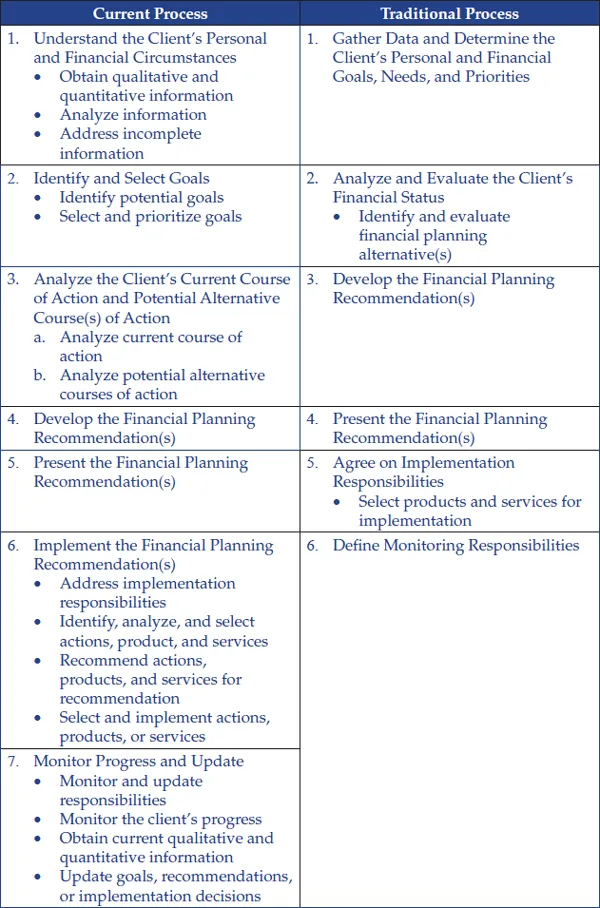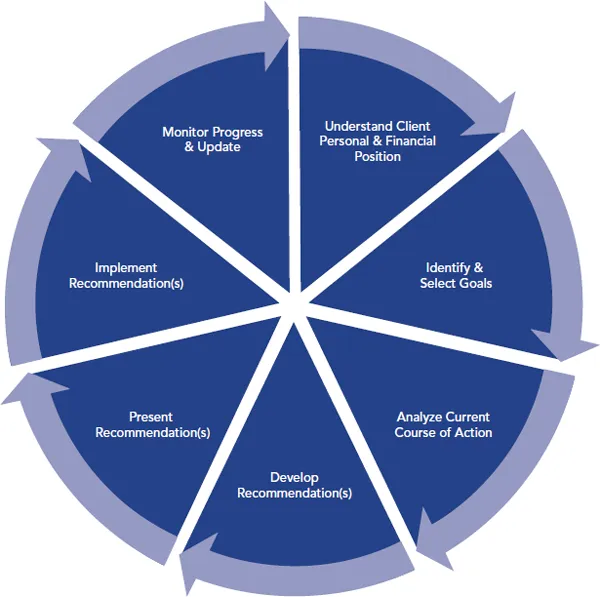
eBook - ePub
The Case Approach to Financial Planning: Bridging the Gap between Theory and Practice, Fourth Edition (Revised)
John E. Grable, Ronald A Sages, Michelle E Kruger
This is a test
Buch teilen
- 640 Seiten
- English
- ePUB (handyfreundlich)
- Über iOS und Android verfügbar
eBook - ePub
The Case Approach to Financial Planning: Bridging the Gap between Theory and Practice, Fourth Edition (Revised)
John E. Grable, Ronald A Sages, Michelle E Kruger
Angaben zum Buch
Buchvorschau
Inhaltsverzeichnis
Quellenangaben
Über dieses Buch
The Case Approach to Financial Planning: Bridging the Gap between Theory and Practice, Fourth Edition (Revised), fosters sound financial planning logic and decision-making using the CFP Board of Standards, Inc. newly-revised 7-step systematic financial planning process.
This textbook provides the tools and foundation for helping aspiring financial planners learn by doing. The material in this book provides students with real-world scenarios that can provide insights into the financial planning process as they put their financial planning skills to the test.
This title features:
- A content review of the major subject areas typically taught in a college-level financial planning curriculum
- A comprehensive review of important financial planning mathematical formulas and procedures
- A variety of 16 case studies, including an ethics review case
- Chapter-based case examples that illustrate how financial planning strategies can be used to develop client-specific recommendations
- End-of-chapter mini-cases with exercises that challenge students to apply chapter content
- Instructions on how to do calculations essential to creating a financial plan
New in the revised 4thEdition:
- Newly updated materials that reflect current financial planning trends
- Updated information regarding recent tax changes, including the SECURE Act
Topics Covered:
- Financial Planning
- Tax Planning
- Insurance Planning
- Estate Planning
- Assessing Client Risk Tolerance
- Client Communication
- Financial Planning Ethics
- And More! See the "Table of Contents" section for a full list of topics
Häufig gestellte Fragen
Wie kann ich mein Abo kündigen?
Gehe einfach zum Kontobereich in den Einstellungen und klicke auf „Abo kündigen“ – ganz einfach. Nachdem du gekündigt hast, bleibt deine Mitgliedschaft für den verbleibenden Abozeitraum, den du bereits bezahlt hast, aktiv. Mehr Informationen hier.
(Wie) Kann ich Bücher herunterladen?
Derzeit stehen all unsere auf Mobilgeräte reagierenden ePub-Bücher zum Download über die App zur Verfügung. Die meisten unserer PDFs stehen ebenfalls zum Download bereit; wir arbeiten daran, auch die übrigen PDFs zum Download anzubieten, bei denen dies aktuell noch nicht möglich ist. Weitere Informationen hier.
Welcher Unterschied besteht bei den Preisen zwischen den Aboplänen?
Mit beiden Aboplänen erhältst du vollen Zugang zur Bibliothek und allen Funktionen von Perlego. Die einzigen Unterschiede bestehen im Preis und dem Abozeitraum: Mit dem Jahresabo sparst du auf 12 Monate gerechnet im Vergleich zum Monatsabo rund 30 %.
Was ist Perlego?
Wir sind ein Online-Abodienst für Lehrbücher, bei dem du für weniger als den Preis eines einzelnen Buches pro Monat Zugang zu einer ganzen Online-Bibliothek erhältst. Mit über 1 Million Büchern zu über 1.000 verschiedenen Themen haben wir bestimmt alles, was du brauchst! Weitere Informationen hier.
Unterstützt Perlego Text-zu-Sprache?
Achte auf das Symbol zum Vorlesen in deinem nächsten Buch, um zu sehen, ob du es dir auch anhören kannst. Bei diesem Tool wird dir Text laut vorgelesen, wobei der Text beim Vorlesen auch grafisch hervorgehoben wird. Du kannst das Vorlesen jederzeit anhalten, beschleunigen und verlangsamen. Weitere Informationen hier.
Ist The Case Approach to Financial Planning: Bridging the Gap between Theory and Practice, Fourth Edition (Revised) als Online-PDF/ePub verfügbar?
Ja, du hast Zugang zu The Case Approach to Financial Planning: Bridging the Gap between Theory and Practice, Fourth Edition (Revised) von John E. Grable, Ronald A Sages, Michelle E Kruger im PDF- und/oder ePub-Format sowie zu anderen beliebten Büchern aus Law & Antitrust. Aus unserem Katalog stehen dir über 1 Million Bücher zur Verfügung.
Information
Chapter 1
The Financial Planning Process
Learning Objectives
•Learning Objective 1: Summarize and explain the steps of the financial planning process.
•Learning Objective 2: Describe how the financial planning process, as established by the Certified Financial Planner Board of Standards, Inc. (CFP Board), serves as a framework for guiding financial planners when working with clients.
•Learning Objective 3: Understand the role of case studies when preparing for financial planning certification.
CFP® Principal Knowledge Topics
•CFP Topic: A.1. CFP Board’s Code of Ethics and Professional Responsibility and Rules of Conduct.
•CFP Topic: A.2. CFP Board’s Financial Planning Practice Standards.
•CFP Topic: A.3. CFP Board’s Disciplinary Rules and Procedures.
•CFP Topic: A.7. Fiduciary.
•CFP Topic: B.8. Financial Planning Process.
•CFP Topic: B.14. Client and Planner Attitudes, Values, Biases, and Behavioral Finance.
Chapter Equations
There are no equations in this chapter.
THE CASE STUDY APPROACH
The profession of financial planning has expanded quickly since its inception in 1969. During the 1960s and 1970s, financial planning consisted of little more than a small consortium of financial service professionals interested in offering clients a value-added service, in addition to insurance and mutual fund products. Since its inception, financial planning has grown into a dynamic, growing, and respected profession.
The growth of financial planning, both as a recognized profession and as an important behavioral change force in the lives of individuals and families, has been remarkable. Starting with fewer than fifty Certified Financial Planner (CFP®) professionals in the early 1970s, the number of CFP® certificants has grown to more than eighty thousand today. Worldwide growth in financial planning, particularly among CFP® professionals, is even more stunning. As the profession has expanded in recent years, the number of students studying financial planning has also grown, which has prompted the need for tools students and aspiring financial planners can use to enhance their knowledge, skill set, and confidence. Thus, the purpose of this textbook.
This book has been designed to help students synthesize knowledge obtained in multiple classes into practical techniques that can be used to solve theoretical and practical financial planning case studies. The tools, techniques, and strategies presented here are intended to serve as a manual to help students and aspiring financial planners piece together divergent concepts into strategic recommendations. Before describing each element of the book, it is worthwhile to take a step back and review two important concepts. First, what exactly is meant by the phrase ‘financial planning’? And second, what is the relationship between financial planning and the process of financial planning?
FINANCIAL PLANNING DEFINED
Professional organizations and leading members of the financial planning community have defined financial planning in a variety of ways. The most recognized definition, offered by the Certified Financial Planner Board of Standards, Inc. (CFP Board), defines financial planning as a process. According to CFP Board,1 financial planning denotes:
“The collaborative process that helps maximize a client’s potential for meeting life goals through financial advice that integrates relevant elements of the client’s personal and financial circumstances.”2
Financial planning can be thought of as a humanistic science focused on helping individuals and families manage and improve their financial situation. The term humanistic, as used here, means that a financial planner focuses on individuals and families and the values, capabilities, and capacities clients bring with them when dealing with complex financial questions and issues. Financial planning is a science because financial planning professionals rely on critical thinking, data, and evidence-based practices, rather than generalized rules or dogmas, when formulating client-centered strategies.3
THE FINANCIAL PLANNING PROCESS
Traditionally, the practice of financial planning has followed what is generally referred to as the financial planning process. In its Standards of Professional Conduct, CFP Board describes the financial planning process as the following seven steps:
1.Understanding the client’s personal and financial circumstances
2.Identifying and selecting goals
3.Analyzing the client’s current course of action and potential alternative course(s) of action
4.Developing the financial planning recommendation(s)
5.Presenting the financial planning recommendation(s)
6.Implementing the financial planning recommendation(s)
7.Monitoring progress and updating
The financial planning process has been revised over the years. The current seven-step financial planning process represents the latest revision as of 2018. Prior to the revision, the process consisted of six steps. Figure 1.1 compares the current financial planning process with the way nearly all financial planners have traditionally conceptualized the process of financial planning.
Figure 1.1. The Current Financial Planning Process Compared to the Traditional Process

Figure 1.2 illustrates how the financial planning is circular in nature, with ongoing monitoring continually informing the type of information a financial planner must obtain to continually ensure that a client is moving toward goal achievement.
THE ROLE OF FINANCIAL PLANNERS
Figure 1.2. The Circular Nature of the Financial Planning Process

According to the Bureau of Labor Statistics,4 a financial planner is a professional who provides advice on investments, insurance, mortgages, college savings, estate planning, taxes, and retirement to help individuals manage their finances. Financial planners tend to look at a client’s financial situation holistically. Unlike a financial advisor who may provide advice and council on investment or insurance topics, or an accountant who may only prepare a client’s tax or perform auditing services, a financial planner, by definition, is generally tasked with evaluating a client’s overall financial situation and then using professional judgment to make integrated recommendations with the intent of improving a client’s financial situation. Subject areas typically reviewed by a financial planner include, but are not limited to, the following:
•Financial statement preparation and analysis (including cash flow and net worth management and budgeting)
•Insurance planning and risk management
•Employee benefits planning
•Investment planning
•Income tax planning
•Education planning
•Retirement planning
•Estate Planning
Essentially, a financial planner is expected to use the financial planning process to guide their client generally and specifically within—and across—each subject area.
Financial Planning Practice Standards and Ethics
Financial planning professionals who are CFP® certificants must also follow practice standards developed and promulgated by CFP Board. These standards are described CFP Board’s Standards of Professional Conduct—all of which have evolved within the profession to gu...